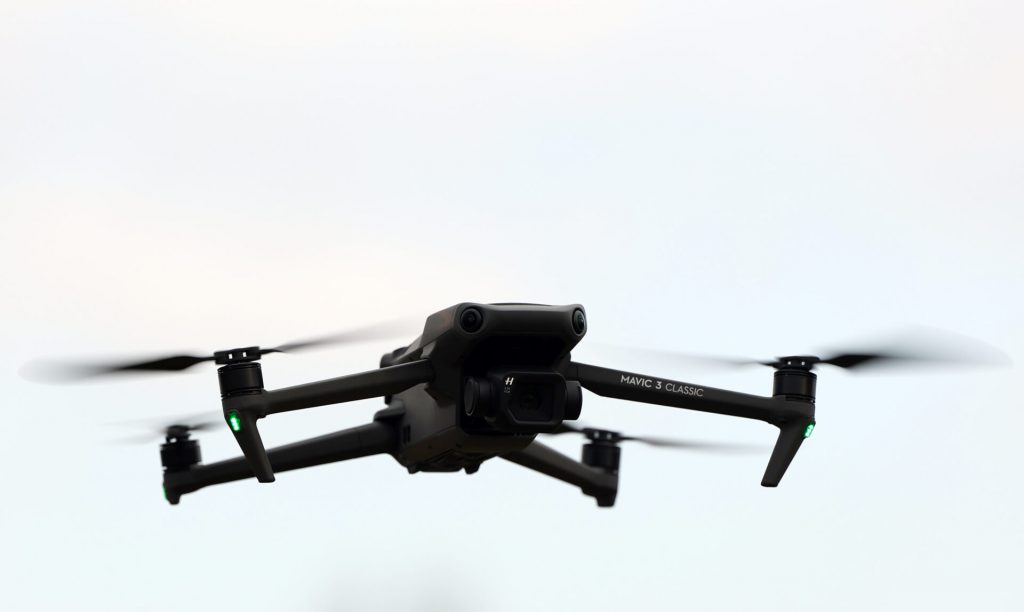EU bets on drones and AI to secure next-generation defence edge

Once dominated by soldiers and tanks, today’s battlefields are increasingly defined by drones, robotic systems and artificial intelligence (AI), ushering in a new era where modern technologies determine the balance of power.
“We are in a technological arms race between drone threats and drone defence – in both the hybrid and military domains.”German Interior Minister Alexander Dobrindt
On Thursday, Dobrindt announced that Germany will “rearm” in terms of drone defence by reforming the Air Security Act, which was designed to prevent and combat attacks on aviation.
Polish President Karol Nawrocki told the UN Security Council on Wednesday that “today, our security is threatened not only by tanks and missiles, but also by cyberattacks, disinformation campaigns, the use of so-called deep fakes and manipulation in the information space”.
Nawrocki said AI could also help Poland defend itself, but the technology must be regulated and the UN Security Council should play the leading role in establishing the guidelines for its use and development.
In a letter on Monday, politicians, Nobel Prize winners and scientists working at AI giants Anthropic, Google DeepMind, Microsoft and OpenAI issued a similar warning. They called on nations around the world to quickly establish “red lines” too dangerous for artificial intelligence to cross.
With regards to defence, they warned against entrusting AI systems with command of nuclear arsenals or any kind of lethal autonomous weapons system as well as using the technology for cyberattacks.
Russian airspace violations in Poland, Romania and Estonia in the last two weeks have caused concern in the European Union and NATO and thrust their preparedness for drone warfare into the spotlight. In response, Poland shot down some of the incoming drones, marking the first time Russian drones have been destroyed mid-flight over NATO territory since the beginning of Russia’s invasion of Ukraine.
Similarly, drones were spotted over several Danish and Norwegian airports this week. While no evidence has yet linked the incidents to Russia, European Commission President Ursula von der Leyen pointed to “a pattern of persistent contestation at our borders”.
“Drone wall” in the making
The increasing threats have prompted the European Commission to propose a so-called “drone wall” along NATO’s eastern flank. At her State of the Union address earlier this month, von der Leyen said the EU “must heed the call of our Baltic friends and build a drone wall”. She added: “This is not an abstract ambition. It is the bedrock of credible defence.”
Gundbert Scherf, CEO of the German defence company Helsing, said back in March that “a drone wall could be erected within a year”, adding that “reconnaissance systems, satellites and probably reconnaissance drones” are needed.
German Bundeswehr Inspector General Carsten Breuer warned that it would be a “mistake” to lose sight of other threats. “We must not say we are only focusing on drones. As central as the development of drones is for our defence capability, we still face threats from cruise missiles, rockets and aircraft.”
According to Scherf, the experience of Ukraine showed that western countries require a different form of deterrent along their eastern flank. Drones are not seen as an alternative to tanks and artillery, but as a necessary and highly cost-effective supplement, he argued.
While the Commission has not released any detailed plans for its “drone wall”, a spokesperson on Thursday confirmed that nine EU countries – Bulgaria, Estonia, Latvia, Finland, Lithuania, Poland, Denmark, Slovakia and Romania – as well as Ukraine, as an EU candidate country, will meet in Brussels on Friday to discuss the proposal.
The spokesman added that discussions will revolve around the “latest technologies” capable of detecting “these incoming drones” as well as “what we will do to fight back against these drones”.
EU innovation lags behind
The EU and its member states are actively looking for ways to boost their lagging defence industry, including the use of AI and the rapid production of new drones.
According to EU Defence Commissioner Andrius Kubilius, the bloc should learn from Ukraine for guidance. “We need to forget Silicon Valley – it’s the past. Ukraine is the future,” he said.
For months, Ukraine has been attacked almost every night by hundreds of Russian drones. To repel them, Kyiv has developed inexpensive tools, such as electronic jammers and interception drones. According to an Agence France-Presse (AFP) analysis of Ukrainian Air Force data, more than 80 percent of Russian drones get shot down.
NATO neutralised fewer than five of the twenty that recently entered Polish airspace. According to Ukrainian observers, sending fighter jets and firing missiles to shoot down drones was an outdated and far too costly response. “We don’t have Ukraine’s capabilities to combat a drone invasion,” Kubilius has acknowledged.
Yordan Bozhilov, founder and President of the Sofia Security Forum, has noted that only three of the world’s 50 largest tech companies are European, turning the continent into a consumer market rather than an innovation leader. He argued that Europe is acting too slowly and urged Bulgaria to empower small and medium-sized enterprises, particularly start-ups developing emerging technologies such as drones, anti-drone systems, AI, and robotics.
Bozhilov emphasised the urgent need for effective drone-defence systems, warning however that cheap and widely accessible drones pose risks not only from state actors but also from terrorists and malicious individuals.

Europe’s next-gen drones?
Meanwhile, Europe isn’t standing still – new initiatives aim to put its drone industry on the map.
One standout example comes from the Czech Republic, where engineers are developing the Eagle.One, an autonomous drone hunter, in cooperation with the Department of Cybernetics of the Czech Technical University in Prague.
Eagle.One is capable of using artificial intelligence to safely intercept unauthorised drones in protected airspace without destroying them. It weighs 15 kilograms, has eight rotors and can fly at speeds of up to 100 kilometres per hour. With on-board AI, it responds to unpredictable target movement and can capture multiple drones in a single mission.
In Germany, Helsing has developed the HX-2 drone – initially for use in Ukraine – which employs AI to guide explosive charges to a target and is less susceptible to electronic interference.
Helsing also leverages international cooperation. It has established a partnership with French space start-up Loft Orbital to monitor borders and troop movements using reconnaissance satellites. With the Swedish manufacturer Saab, preparations are being made to install an AI application for air combat in the Gripen fighter jet.
In May, Helsing also unveiled an underwater drone that can be deployed to protect ships and critical infrastructure. Dubbed SG-1 Fathom, the autonomous underwater glider is capable of patrolling “for up to three months at a time in search of underwater threats”, Helsing said in a press release.
In France, carmaker Renault confirmed it had been contacted by the Ministry of the Armed Forces to establish a presence in Ukraine to produce drones for the Ukrainian and French armies.
Earlier this year, that same Ministry had revealed that it wanted to involve civilian industrial chains, particularly automotive and chemical, to be able to mass-produce certain military equipment. One of the projects involved the manufacture of drones on a scale of “several thousand in a few months”, as Emmanuel Chiva, Director General for Armaments, specified at the time.
In Slovenia, drones and anti-drone protection are among the main products being developed by the country’s defence industry, which is accelerating the establishment of its own production and development capabilities while strengthening security and resilience at the EU level.
In September, Slovenia officially launched the new state-owned defence company DOVOS, a move designed to strengthen the country’s domestic industry and secure a larger share of growing European defence funds.
Romania also seeks to boost its defence industry, including drones and anti-drone protection, through the Security Action for Europe (SAFE) initiative, an EU financial instrument providing up to 150 billion Euro in loans. Through SAFE, it aims to build a drone factory in partnership with Ukraine or some EU companies, as well as exploiting Romania’s untapped graphene reserves – a material prized for its unmatched strength, lightness, and flexibility.
Friday’s talks in Brussels could give a first glimpse into how the EU plans to bolster drone defences and harness the innovation of these AI startups and drone producers to set the stage for a new era of European defence.
This article is an enr Key Story. The content is based on news by agencies participating in the enr.














































